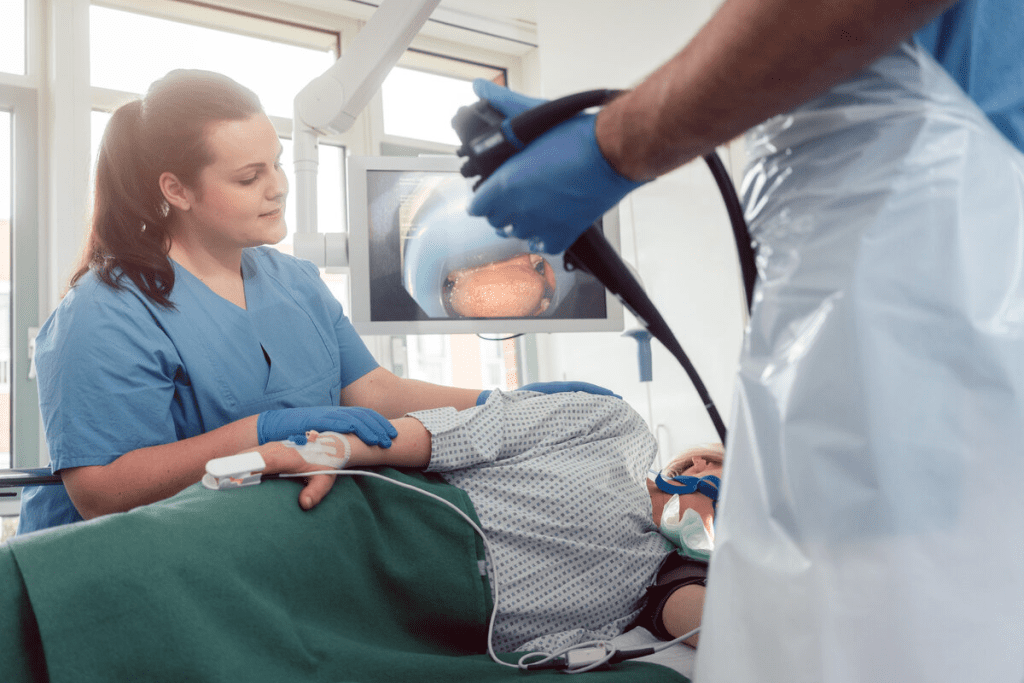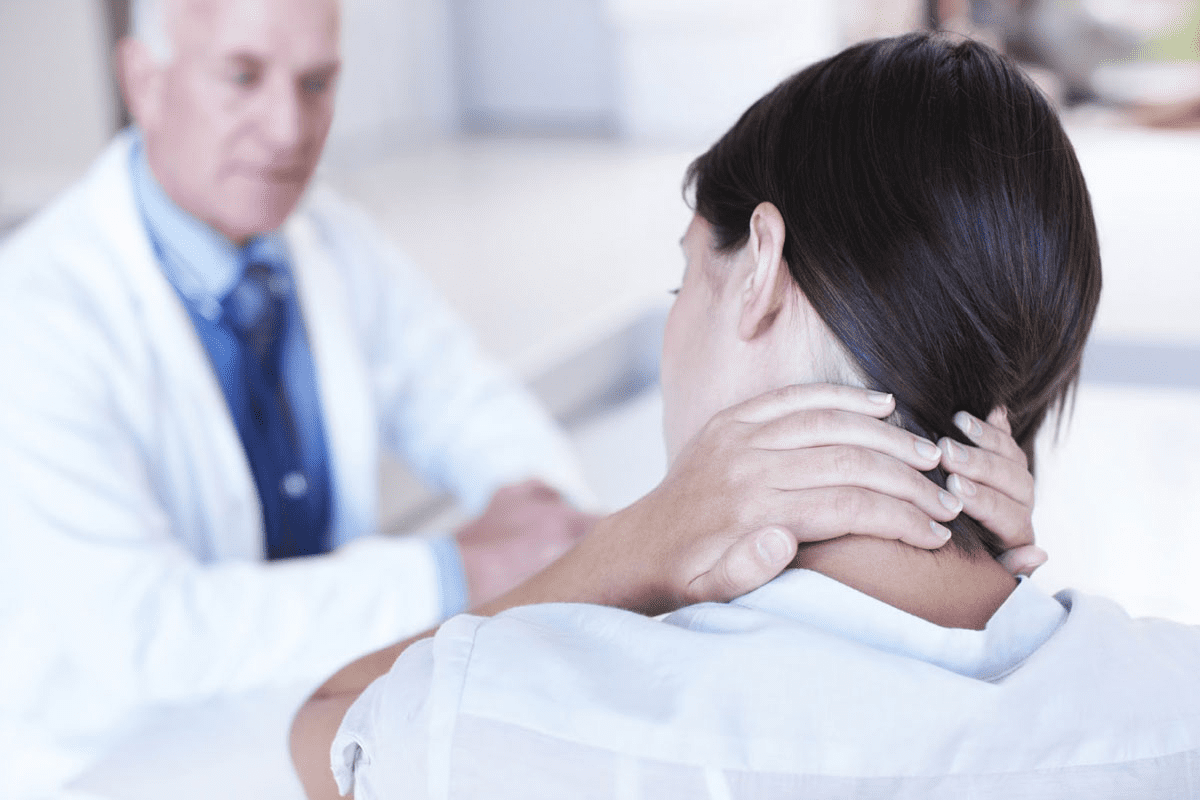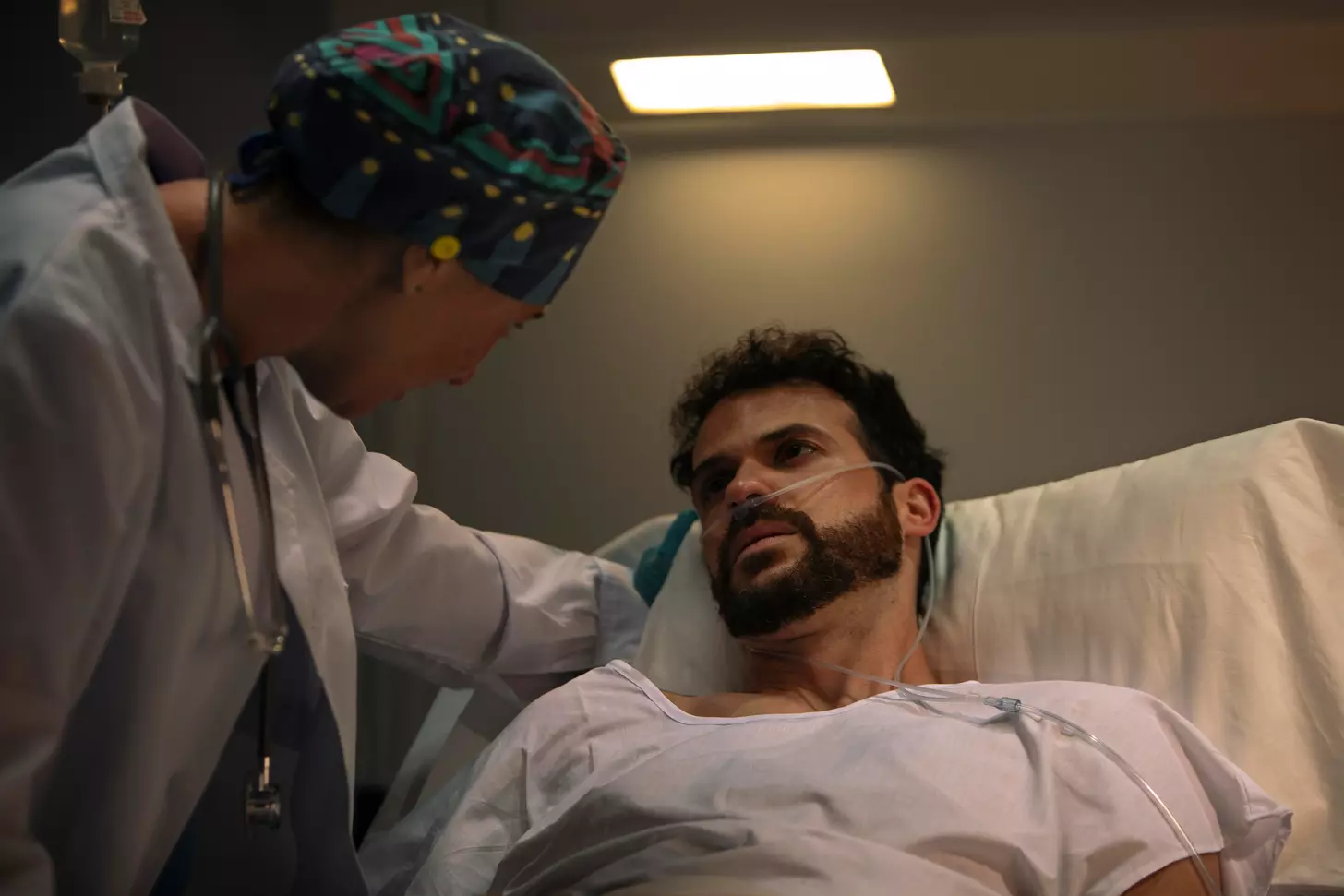Last Updated on November 26, 2025 by Bilal Hasdemir

Nearly 1 in 24 adults in the United States will get colorectal cancer in their lifetime, says the American Cancer Society. A colonoscopy is key for finding this disease. It lets doctors check the colon for polyps, cancer, and other issues.
A colonoscopy can spot colorectal cancer and polyps that might turn cancerous. This is why it’s important for people at risk or over 45.
Key Takeaways
- Colonoscopy is a key screening method for detecting colorectal cancer.
- The procedure can identify precancerous polyps and cancerous growths.
- Early detection through colonoscopy improves treatment outcomes.
- Individuals over 45 or at risk should undergo regular screenings.
- Colonoscopy is a safe and effective diagnostic tool.
Understanding Colonoscopy: Purpose and Procedure

It’s important for patients to know about colonoscopies. This test helps doctors see inside the colon for problems like polyps or cancer.
Definition and Medical Purpose
A colonoscopy uses a flexible tube with a camera to look at the colon and rectum. It helps find and remove polyps before they turn into cancer. This is key for catching cancer early.
People over 45 should get a colonoscopy to stay healthy. It’s part of their preventive care.
When Doctors Recommend a Colonoscopy
Doctors suggest a colonoscopy for several reasons:
- Rectal bleeding, changes in bowel habits, or stomach pain.
- A family history of colorectal cancer or polyps.
- Having had colorectal cancer or polyps before.
- As a screening for those over 45.
Gastroenterologists, who specialize in digestive system issues, do colonoscopies. They have the skills to perform and understand the results.
Is a colonoscopy considered a surgical procedure? It’s not surgery because it doesn’t involve cutting or removing big pieces of tissue. Yet, it’s a medical procedure that needs careful preparation and attention.
Knowing about colonoscopies helps patients prepare and see their importance in health care.
What Does a Colonoscopy Show?

A colonoscopy gives doctors a clear view of the colon’s health. It helps them find and treat problems early. This test is key for spotting issues in the colon that could mean different health problems.
Normal vs. Abnormal Findings
Doctors look at the colon’s lining during a colonoscopy. Normal findings show a healthy colon. But, abnormal findings might mean polyps, inflammation, or other issues. These don’t always mean cancer, but they do need attention.
It’s important to know the difference between normal and abnormal results. If there are abnormal findings, more tests or treatments might be needed. For example, removing polyps to stop them from turning cancerous.
Types of Conditions Detected
A colonoscopy can find many conditions, including:
- Polyps: These are growths on the colon lining that can be harmless or cancerous.
- Colorectal cancer: This is cancer in the colon or rectum.
- Inflammatory bowel disease (IBD): This includes Crohn’s disease and ulcerative colitis, causing ongoing inflammation.
- Diverticulosis: This is when small pouches form in the digestive tract.
Finding these conditions early can greatly improve treatment success. This shows why regular screenings are so important.
Limitations of Detection
Even though colonoscopy is very effective, it’s not perfect. It can miss some lesions or abnormalities. The quality of the bowel prep, the doctor’s skill, and the type of lesions can affect how accurate the results are.
Knowing these limits is key for doctors and patients. It highlights the need for regular screenings and check-ups to keep an eye on colon health.
Who Performs Colonoscopies? Medical Specialists Explained
Gastroenterologists are the main doctors who do colonoscopies. They know a lot about the digestive system. They have the skills to do this procedure.
Gastroenterologists and Their Qualifications
Gastroenterologists get a lot of education and training. They finish medical school and then do a residency in internal medicine. After that, they do a fellowship in gastroenterology.
This training helps them diagnose and treat digestive problems. They can also do colonoscopies.
A gastroenterologist’s qualifications include:
- Completion of medical school
- Residency in internal medicine
- Fellowship in gastroenterology
- Board certification in gastroenterology
The American Board of Internal Medicine says you need to pass a tough exam to be certified. This exam tests their knowledge and skills in treating gastrointestinal diseases.
Other Medical Professionals Involved in the Procedure
While gastroenterologists do most of the work, others are important too. Nurses, anesthesiologists, and pathologists all play key roles.
| Professional | Role |
| Nurses | Help during the procedure, watch over the patient, and take care of them before and after. |
| Anesthesiologists | Give sedation to keep the patient comfortable during the colonoscopy. |
| Pathologists | Look at tissue samples for any abnormal cell changes. |
A gastroenterologist, says, “A team effort is key for a successful colonoscopy. Each person brings their own expertise to make sure it’s done right.”
The teamwork between gastroenterologists, nurses, anesthesiologists, and pathologists makes colonoscopy a reliable and important tool for prevention.
In short, while gastroenterologists do colonoscopies, a team of medical professionals is involved. Knowing their roles helps patients understand the care and complexity of this important test.
The Step-by-Step Process of a Colonoscopy Procedure
Learning about a colonoscopy can ease worries and get you ready. It’s a test that uses a flexible tube with a camera to look inside the colon.
Preparation Requirements
Getting ready for a colonoscopy is key. You’ll likely eat only clear liquids the day before. This includes broths, clear juices, and water. You might also take a bowel prep medicine to clean your colon.
The bowel prep is a laxative solution to empty your colon. It’s vital to follow your doctor’s instructions well. This ensures your colon is ready for the test.
What Happens During the Examination
During the colonoscopy, you’ll lie on your side, usually on the left. The colonoscope goes through your rectum into your colon. The procedure is done under sedation to make you comfortable.
The doctor looks for any issues like polyps or inflammation. If polyps are found, they can be removed. The whole test usually takes 30 to 60 minutes.
Sedation and Comfort Measures
Sedation is important for your comfort during the colonoscopy. The amount of sedation can vary. It depends on what you need and what your doctor suggests.
After the test, you’ll be watched until the sedation wears off. You might feel a bit drowsy or have gas and bloating. But these feelings are short-lived. Most people can go back to their usual activities the next day.
Is a Colonoscopy Considered a Surgical Procedure?
It’s important to know the difference between a medical procedure and surgery, like with colonoscopies. A colonoscopy lets doctors see inside the colon for polyps, cancer, and other issues.
Defining Medical Procedures vs. Surgery
Medical procedures and surgeries differ in how invasive they are and their purpose. A colonoscopy is not very invasive. It uses a flexible tube with a camera inserted through the rectum.
“The line between a medical procedure and surgery can be blurry,” says a gastroenterology expert. “But, colonoscopy is not seen as surgery because it’s less invasive.”
Invasiveness Level of Colonoscopies
Colonoscopies are less invasive than surgeries. They don’t need cuts in the abdomen. The recovery time is short, and the procedure is done under sedation to reduce pain.
Recovery Expectations
Recovery from a colonoscopy is usually quick. Most people can go back to their normal activities the next day. It’s wise to have someone with you after the procedure because of the sedation.
Some might feel bloated or gassy, but these symptoms usually go away. It’s key to follow your doctor’s advice for aftercare to recover well.
In summary, even though a colonoscopy is invasive, it’s not surgery. It doesn’t have surgical cuts. Knowing this can ease worries for those getting the procedure.
Polyp Detection and Removal During Colonoscopy
Colonoscopy helps find and remove polyps early. This is key to stopping colorectal cancer. Polyps grow on the colon or rectum’s inside. Most are harmless, but some can turn cancerous.
Types of Polyps and Their Significance
During a colonoscopy, you might find different polyps. These include hyperplastic, adenomatous, and sessile serrated polyps. Adenomatous polyps, or adenomas, are precancerous. They can turn into colorectal cancer.
Adenomatous polyps are important because removing them can stop cancer. The type and details of the polyp decide what to do next.
The Polyp Removal Process
Removing polyps during a colonoscopy is called polypectomy. Special tools are used to cut or burn the polyp’s base. The removed polyp is then checked for cancer cells.
Follow-up After Polyp Removal
After removing polyps, you might need more colonoscopies. This is to look for new polyps or check the removed site. How soon you need another colonoscopy depends on the polyp’s type, size, and number. It also depends on your risk for colorectal cancer.
| Polyp Characteristics | Follow-up Recommendation |
| 1-2 small ( | 5-10 years |
| 3-10 adenomatous polyps or 1 polyp >1 cm | 3 years |
| More than 10 adenomatous polyps | Less than 3 years, consider 1 year |
Cancer Detection During Colonoscopy: What Happens Next
Finding cancer during a colonoscopy is a big moment. It means quick and accurate medical action is needed. The team will confirm the diagnosis and plan the next steps fast.
Immediate Steps When Cancer Is Suspected
When cancer is thought of, the doctor will act fast. They might look closer at the area or take tissue samples for tests.
Biopsy Procedure and Sample Collection
A biopsy is key to confirm cancer. A small tissue sample is taken from the area in question. This sample goes to a lab to check for cancer and its type.
Communication with Patients About Findings
Telling patients about cancer findings is very important. The doctor will explain the results, what they mean, and what to do next. It’s important for patients to know their diagnosis and treatment options.
Emotional Support Resources
Getting a cancer diagnosis is tough emotionally. It’s important to offer support. This can include counseling, support groups, and educational materials.
Support groups give a sense of community. Counseling services offer emotional help and ways to cope. Patients should use these resources to deal with their feelings and the treatment journey.
Understanding Biopsy Results and Timeframes
Knowing how long it takes to get biopsy results after a colonoscopy is key. It helps ease the worry of waiting for news.
Why Biopsy Results Take Time
Biopsy results take time because the tissue samples go to a lab for detailed checks. Pathologists look at these samples under a microscope for any signs of cancer. This careful process is needed for an accurate diagnosis.
The lab work includes preparing the samples, staining them, and then examining them. Each step is important and adds to the time it takes to get the results.
How Results Are Classified and Staged
When the biopsy results come back, they are sorted based on what’s found. If cancer is present, the results are staged to see how far it has spread. Cancer staging looks at the tumor size, if lymph nodes are affected, and if it has spread to other areas.
The stage of cancer helps doctors decide the best treatment. It shows how serious the cancer is and guides the next steps in care.
Dealing with Uncertainty During the Waiting Period
Waiting for biopsy results can be tough, filled with worry and uncertainty. It’s important for patients to stay informed and get support from their healthcare team, family, and friends. Support groups can also offer help and comfort.
Keeping up with daily activities and using stress-reducing methods can help with anxiety. Patients should not hesitate to ask their healthcare team any questions or concerns.
Treatment Pathways Following a Cancer Diagnosis
When you get a colon cancer diagnosis, a detailed evaluation starts. This aims to find the best treatment plan. It looks at the cancer’s stage and other important factors. A team of experts works together to make sure you get care that fits your needs.
Specialist Referrals and Multidisciplinary Teams
After diagnosis, you’ll meet a team of specialists. They include gastroenterologists, oncologists, surgeons, and more. This team creates a treatment plan just for you.
They work together to cover all parts of your condition. This teamwork helps make your treatment more effective.
Treatment Options Based on Cancer Stage
The cancer’s stage at diagnosis is key in choosing treatment. You might get surgery, chemotherapy, radiation therapy, or targeted therapy. Early cancer might just need surgery. But more advanced cancer might need a mix of treatments.
| Cancer Stage | Primary Treatment Options | Additional Therapies |
| Stage I | Surgery | None |
| Stage II | Surgery | Chemotherapy (in some cases) |
| Stage III | Surgery, Chemotherapy | Radiation Therapy (in some cases) |
| Stage IV | Chemotherapy, Targeted Therapy | Surgery (for symptom relief), Radiation Therapy |
Decision-Making Process for Treatment
Choosing your treatment involves talking with your healthcare team. They consider your health, the cancer’s details, and the pros and cons of each option. It’s important to ask questions and share your wishes.
This way, you can understand your treatment options. It helps you make choices that fit your values and goals.
Accuracy and Limitations of Colonoscopy in Cancer Detection
It’s important for both doctors and patients to know about colonoscopy’s strengths and weaknesses. This knowledge helps in making the right choices for colorectal cancer screening.
Detection Rates and Missed Lesions
Colonoscopy is a top tool for finding colorectal cancer early. It can cut down on deaths from this disease. But, it’s not 100% accurate and sometimes misses lesions.
How well colonoscopy works depends on several things. These include the doctor’s skill, how well the bowel is prepared, and the technology used. Newer methods and better images have made it more effective.
Key statistics on colonoscopy detection rates include:
- Adenoma detection rates (ADRs) are a key quality indicator, with higher ADRs associated with lower risks of interval colorectal cancer.
- Studies have shown that the miss rate for adenomas greater than 1 cm is around 2-6%.
- The effectiveness of colonoscopy in reducing colorectal cancer incidence and mortality is well-documented.
Factors Affecting Accuracy
Several things can affect how well colonoscopy works. These include:
- Bowel Preparation Quality: If the bowel isn’t well-prepared, the procedure won’t work as well.
- Operator Skill and Experience: The doctor’s skill and experience are key to finding lesions.
- Technology and Equipment: Using the latest technology and equipment can help find more lesions.
Comparing Colonoscopy to Other Screening Methods
Colonoscopy is often compared to other ways to screen for colorectal cancer. These include fecal occult blood tests (FOBT), sigmoidoscopy, and CT colonography. Each has its own good points and downsides.
Colonoscopy is special because it can find and remove polyps at the same time. This makes it a favorite for many. But, it’s more invasive and needs sedation, unlike some other tests.
When looking at different screening methods, patient preference, risk for colorectal cancer, and what resources are available are all important.
Potential Risks and Complications of Colonoscopy
Colonoscopy is generally safe, but knowing the risks is important. Being informed helps manage expectations and spot any problems early.
Common Side Effects
Most people have a smooth colonoscopy experience. But, some might feel bloated, gassy, or have mild stomach cramps. These usually go away in a few hours or days. After the procedure, feeling a bit drowsy or tired is common because of the sedation.
Serious Complications and Their Frequency
Though rare, serious complications can happen. These include a hole in the colon, heavy bleeding, or bad reactions to sedation. These issues are rare, affecting less than 1% of people. A study in the Journal of Clinical Gastroenterology found the risk of a perforation is 0.07% to 0.19%.
| Complication | Frequency |
| Perforation | 0.07% – 0.19% |
| Significant Bleeding | 0.2% – 1.0% |
| Adverse Reaction to Sedation | Rare |
When to Seek Medical Attention After the Procedure
Knowing when to get help after a colonoscopy is key. If you have severe stomach pain, heavy bleeding, fever, or signs of infection, seek immediate medical help. While some discomfort is normal, certain symptoms need urgent care. If you’re not sure about your symptoms, it’s best to talk to your doctor.
Colonoscopy Surveillance: Follow-up Schedules
After a colonoscopy, follow-up appointments are key for ongoing care. How often and why these visits are needed depends on the first colonoscopy’s results.
Recommended Intervals Based on Findings
The time between colonoscopies varies based on what’s found. Those with high-risk polyps might need to come back sooner.
| Finding | Recommended Interval |
| No polyps or low-risk polyps | 10 years |
| High-risk polyps | 3 years |
| Cancerous polyps | As recommended by specialist |
Importance of Adherence to Follow-up
Sticking to follow-up schedules is vital for catching cancer early. Missing these appointments can delay diagnosis and harm outcomes.
Personalized Screening Plans
Screening plans are made to fit each person’s risk. Talking to a gastroenterologist helps create a plan that meets your needs.
Following these plans and attending follow-ups can greatly lower your risk of colorectal cancer.
Conclusion: The Vital Role of Colonoscopy in Cancer Prevention and Early Detection
Colonoscopy plays a vital role in preventing colorectal cancer by detecting and removing precancerous polyps early. It also finds cancer early, when it’s easier to treat.
Colonoscopy does more than just find cancer. It helps remove polyps that might become cancer. Regular screenings can lead to better health. They help lower the risk of advanced colorectal cancer.
In short, colonoscopy is a powerful tool against colorectal cancer. It helps prevent cancer and keeps our guts healthy. Knowing how important colonoscopy is, we can take steps to protect our health.
FAQ
What happens if they find cancer during a colonoscopy?
If cancer is found, the doctor will take a biopsy to confirm. Then, you’ll see a specialist to talk about treatment.
Is a colonoscopy considered a surgical procedure?
No, it’s not surgery. It’s a medical test that lets doctors see inside your colon.
What kind of doctor performs a colonoscopy?
A gastroenterologist does colonoscopies. They specialize in digestive system issues.
What can a colonoscopy detect?
A colonoscopy can find many things, like colon cancer and polyps. It can also spot the cause of symptoms like bleeding or pain.
What happens during a colonoscopy?
A flexible tube with a camera is inserted into your colon. The doctor looks for problems. You’ll get sedation to relax.
Can a colonoscopy detect stomach cancer?
No, colonoscopies don’t find stomach cancer. But an upper endoscopy can check your stomach for cancer.
How is colon cancer detected?
Colon cancer is found during a colonoscopy. Doctors look inside your colon and remove tissue for tests.
How long does it take for colon cancer to develop?
Colon cancer can take years to develop. It often starts as a polyp that turns cancerous over time.
What are the dangers of a colonoscopy?
Colonoscopies are safe but can have risks like bleeding or reactions to sedation. These are rare.
Does colon cancer show up in routine blood work?
Colon cancer might not show up in blood tests. But tests like the fecal occult blood test can find hidden blood, a sign of cancer.
Is colonoscopy safe?
Yes, colonoscopies are safe when done by a skilled doctor. But, like any procedure, there are some risks.
Can a colonoscopy miss cancer?
Colonoscopies are very good at finding cancer. But, there’s a small chance they might miss it.
What percentage of colonoscopies find cancer?
The percentage of colonoscopies that find cancer varies. It’s generally low, though.
How soon do you get colonoscopy results?
You’ll usually get your colonoscopy results right after. But biopsy results might take longer.
Can you go back to work after a colonoscopy?
Most people can go back to work the day after. Some might need a day or two to recover from sedation.
Will a colonoscopy detect prostate cancer?
No, colonoscopies don’t find prostate cancer. Doctors use other tests like a digital rectal exam and PSA test for that.
Why do colonoscopy biopsy results take so long?
Biopsy results take days to weeks. This is because the tissue samples need a pathologist’s examination.
What type of doctor performs colonoscopies?
Gastroenterologists perform colonoscopies. They specialize in digestive system issues.
References
- American Cancer Society. (2024). Key statistics for colorectal cancer. https://www.cancer.org/cancer/colon-rectal-cancer/about/key-statistics.html






